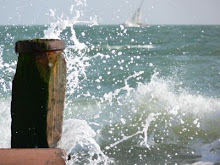Construction on the the Kew temporate house was started in 1860. Due to a series of complications such as the contactor becoming bankrupt the glasshouse was not completed until 1898. In 1861 the contents of the old 'New Zealand' house were transfered into the temporate house as was some Australian plants from the 'Orangery and palms from the 'Palm House'The admiring public were first admitted in May 1863, when the Temperate House was barely two-thirds finished.
In 1977, over a hundred years after the building was finally completed, a full restoration was started. The Temperate House is a Grade 1 listed building, so scrupulous care needed to be taken to keep the integrity of the original design. Modern heating technology keeps the building frost free, at about 6-7°C over the winter. It uses heat exchangers situated in the basements of the octagons, with intense heat piped from the main boilerhouse a quarter of a mile away.

My favourite Brugmansias in the temporate house.



Iconic Kew staircase

Cycad palm

Strelitzia I wish my little one will grow to look like

Koy carp pool

The Rhizotron and Xstrata Treetop Walkway, it is 18 metres high

The lake

Making friends with the geese





























































